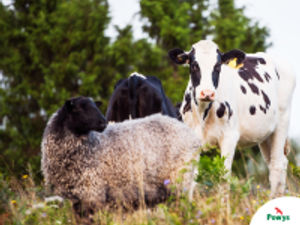Trends which dairy farmers need to think about
Mineral analysis of grass silage from the three years from 2022 to 2024 has shown some pronounced trends which dairy farmers need to think about when rationing their dry cows in particular, a farming manager has said.
“The potassium content of grass silage has trended up by 8.39 per cent since 2022,” says Bruce Forshaw, ForFarmers Product Manager.
“Potassium is a major cation, so increased levels will affect the dietary cation-anion balance, known as DCAB, of a diet.
“You are aiming for a low DCAB diet for dry cows that encourages an animal’s hormone system to mobilise calcium from her bones, ensuring she has enough available calcium at the point of calving.
"She will naturally start to mobilise calcium when she calves but there can be a 48-hour lag time and this is when clinical and sub clinical milk fever can occur,” added Bruce.
“During the same period chloride (anion) in silages has been trending down which will also affect the DCAB value of the forage. If your silage analysis is showing these issues look to add more low DCAB forages such as wholecrop, straw, maize or more mature grass silages that didn’t receive much slurry.
“We know how important it is to get nutrition spot on when rationing dry cows, so a mineral analysis of all forages is essential, especially this year,” Bruce concluded.





